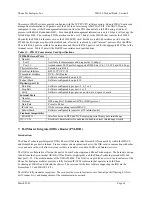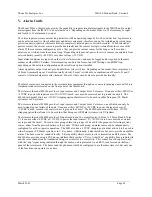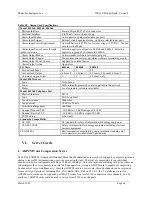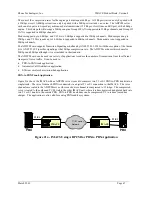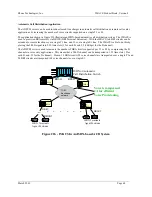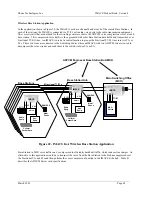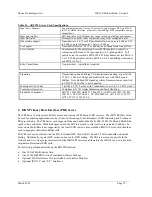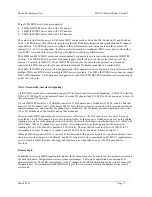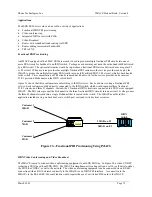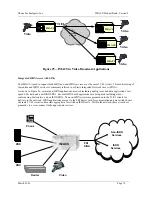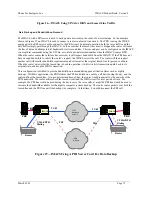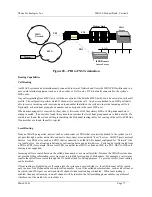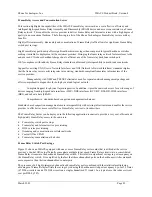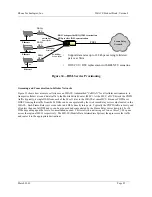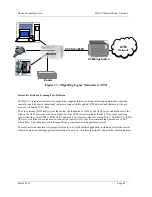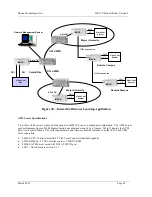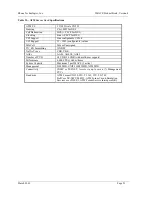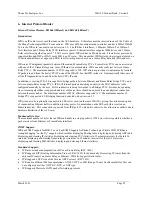
Zhone Technologies, Inc.
IMACS Product Book, Version 4
March 2001
Page 77
PRI
FXS
ISDN
Network
Modem Rack
ISDN Remote
Access Server
PRI
Mail
Server
LAN
IMACS
PSTN
Modem
Figure 28—PRI to FXS Termination
Routing Capabilities
Call Routing
An IMACS system can be simultaneously connected to several Network and User side ISDN PRI facilities and to a
user’s data terminal equipment such as a video codec or LAN router. DTE is usually connected to the system’s
HSU cards.
Any call originating from a HSU port (with the exception of the Switched HSU card), must be associated with a call
profile. The call profile specifies which D channel is to carry the call. Any device attached to an HSU port that is
able to receive incoming calls is assigned a unique number that allows the system to route the incoming call to it.
Optionally, a shared hunt group phone number can be assigned to the same HSU port.
When an incoming call is received by the system, it first scans all of the primary HSU or FXS phone numbers to
attempt a match. If no match is found, the system then searches the list of hunt group numbers to find a match. If a
match is not found, the system will begin searching the D channel routing tables, for routing of the call to a PRI line.
If no matches are found, the call is rejected.
Local Routing
From an IMACS perspective, devices such as video codecs or PBXs that are directly attached to the system (i.e. do
not pass through a carrier network to connect to the system) are considered “local” devices. All HSU ports are local
devices. Any PRI device, such as a PBX, that is connected to an IMACS D channel configured for “Network” side
is a local device. Local routing is defined as call routing between any two devices. Calls can be locally routed from
a PRI to a PRI (for example, from a local PBX to another local PBX), or from an HSU to a PRI. HSU to HSU call
routing is not supported.
Incoming calls are routed based on the called phone number, not on call profiles. Because the IMACS system does
not provide billing information, users may want to prohibit local routing of D-channels. For example, a carrier may
require that all calls are routed through the CO based switch for billing purposes. To provide for this, local routing
can be disabled.
If local routing is disabled, any call coming into the system on a network side (i.e. local) D channel will be routed
only to a user side D channel based on the called number. Even if the called number matches, such a call will never
be routed to an HSU port or a network side D channel when local routing is disabled. When local routing is
enabled, then any call coming in on a D channel will be routed to the first matching phone number, regardless of
whether or not the match is for a local device.
Summary of Contents for IMACS Network Device
Page 1: ...IMACS Product Book...

